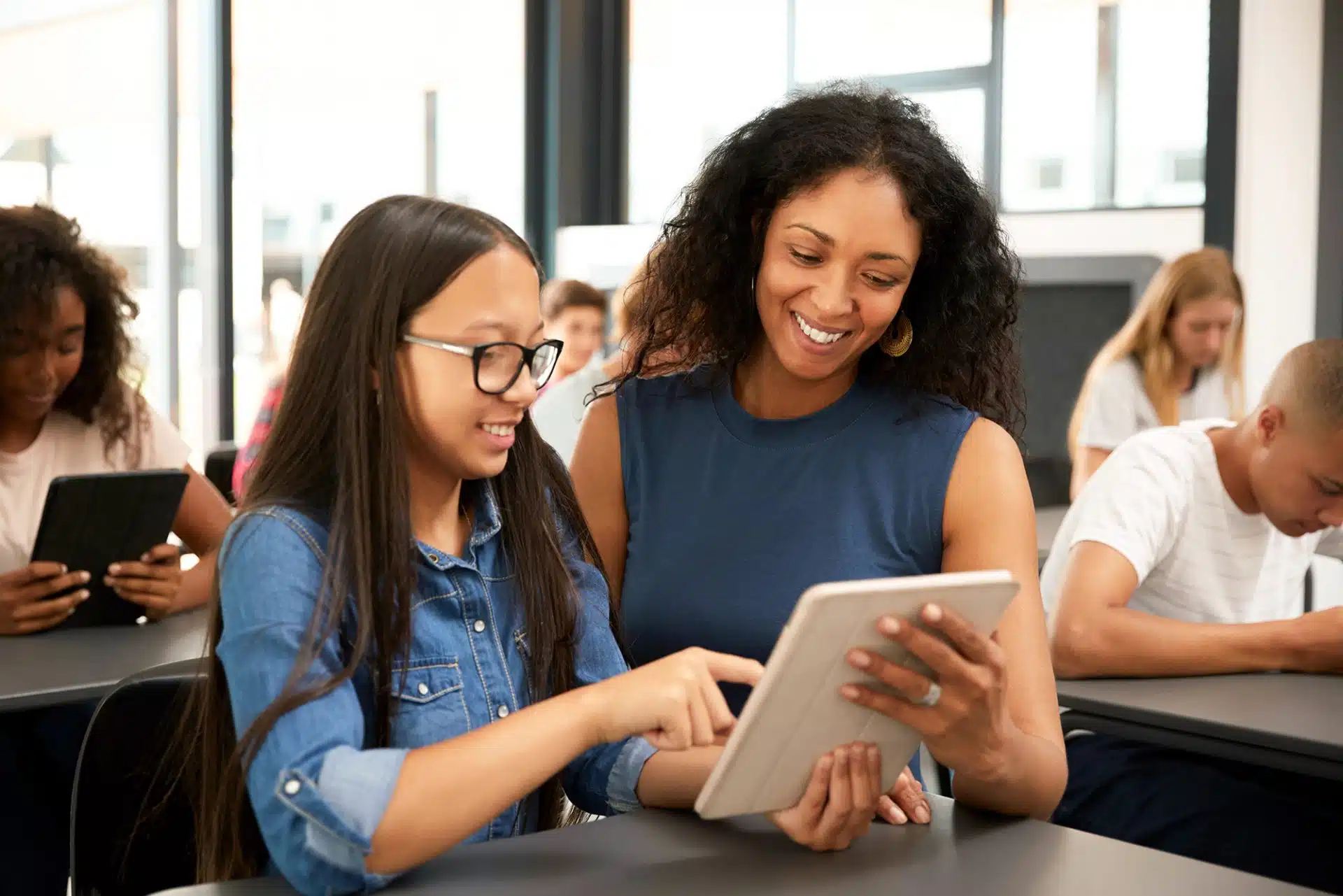Student engagement is foundational for student education and success, and several things go into engagement that people should understand. So, how does student engagement impact learning, and why is it so important in the classroom? Here, we discuss the importance of engaging students and how YouScience® Brightpath helps make it easier and more effective.
What is student engagement?
Student engagement isn’t just classroom participation. It encompasses all aspects of a student’s learning experience, including emotional, behavioral, and cognitive involvement. When students are invested in their education, they become engaged, motivated, and active participants in the classroom. Teachers and schools need to understand the multiple facets of student engagement to ensure they can create dynamic and effective learning environments.
Why is student engagement important?
Student engagement is essential for a successful educational experience. When students actively engage in their learning, they are more likely to get better grades, think critically, and enjoy learning.
Findings from the 2023 Post-Graduation Readiness Report from YouScience® revealed that 65% of high school graduates had five or fewer conversations with teachers or counselors about their post-high school opportunities. Additionally, 25% of graduates reported that their schools did not connect them or their classmates with local businesses to help them understand what local careers are available to them.
Other benefits of student engagement include better attendance, reduced behavioral problems, and increased retention rates. So, why is student engagement so critical? It is the centerpiece for a fulfilling and impactful education experience.
How does student engagement impact learning?
Student engagement heavily impacts overall learning. When students are active participants in their education, they understand and retain things better and can connect concepts from the classroom to real-life situations. Engagement also creates a positive learning environment and increases collaboration, curiosity, and a love of learning.
How to measure student engagement
Educators need to be able to measure student engagement to ensure that their teaching methods are effective. Engagement can be measured through tactile means, like surveys, feedback sessions, and general observation. However, to get a more comprehensive look at the effectiveness of engagement in the classroom, look at attendance, participation rates, completed assignments, increased graduation rates, and higher enrollment in career and technical education courses.
Modern technologies and learning platforms, like YouScience®, provide valuable analytics that deliver helpful insights into student engagement metrics.

How to increase student engagement
Since student engagement is vital to student success, knowing how to increase it is important. Here are several ways teachers can improve student engagement in the classroom.
Create meaningful work
Students should be excited about the work they must do for a class. Getting students excited means designing assignments and activities that tie the curriculum to real-world applications. When students can connect classroom or assignment lessons to practical scenarios, they see the learning experience as more relevant and engaging.
Nurture relationships
Focus on building and nurturing strong, appropriate teacher-student and student-student relationships to create a sense of belonging and connection. When students feel appreciated and encouraged by their teacher and classmates, they tend to engage more actively in their educational journey.
Increase self-efficacy and competency
Empower students by acknowledging and applauding their achievements. Doing this enhances their confidence, competence, and self-efficacy, contributing to increased student engagement and resilience in tackling complex learning concepts.
Foster autonomy
Students should have ample opportunities to make choices in their individual learning experiences. This creates a sense of autonomy and ownership in the experience, leading to increased motivation and engagement as students feel they have a say in their educational journey.
Involve and engage quiet students
Some students are engaged in their studies but don’t actively participate in class. These quiet students need an inclusive, safe environment for all learning styles and personalities. To foster this environment, focus on small group activities, one-on-one discussions, and written reflections to boost participation in a more personal way.
Why is engagement important in the classroom?
Student engagement is the driving force behind effective teaching and learning. When students are engaged, they retain information better, collaborate with peers more easily, and develop critical thinking skills that extend to real-life situations. Teachers can create an engaged classroom by promoting lively discussion, active participation, and an enthusiasm for learning.

What are the different types of student engagements?
There are several types of student engagements, and it’s essential to understand each one to discover how they work cohesively to create a complete picture. Emotional, cognitive, and behavioral engagement are all necessary to improve student engagement in the classroom.
Emotional engagement
This involves students’ emotions toward the subject, teacher, peers, overall academic experience, and their perception of the value of lessons. Emotional engagement is crucial for creating a positive and supportive learning environment.
Cognitive engagement
Cognitive engagement encompasses students’ motivation, commitment to their education, ability to self-regulate, and pursuit of personal educational goals. This type of student engagement helps create mindsets focused on learning and achievement.
Behavioral engagement
This engagement covers factors like attendance, concentration, social interaction in learning, and involvement in extracurricular activities. These are needed to ensure students actively participate in their learning journeys.
How can YouScience Brightpath help with student engagement?
At YouScience, we take an innovative approach to aptitude-based career guidance, helping students discover their interests, aptitudes, and best-fit career and postsecondary pathways. When students learn something new about themselves, they can find new opportunities that match their aptitudes and interests.
In addition to helping students learn more about themselves, YouScience results can also help educators tailor their teaching methods to match individual student learning styles. A personalized approach makes learning more engaging and practical while promoting academic success and personal growth.
When you’re ready to enhance student engagement in the classroom, YouScience is here to help. Contact our team to get started today.
Ready to learn more about YouScience? Check out these related articles.
After the madness: How college athletes can succeed with YouScience
Through YouScience Aptitude & Career Discovery, college athletes who don’t go pro can discover their talents and best-fit careers.
The benefits and importance of aptitude tests in your career
Learn about the importance of aptitude tests. Discover what they are, how they’re used for education and careers, types of aptitude tests, and tips to prepare.
What is an aptitude test?
Learn about aptitude tests, the common types of aptitude tests, how they are administered, and their significance in education and business.




